Discover 11 hidden attractions, cool sights, and unusual things to do in Huntingdon (United Kingdom). Don't miss out on these must-see attractions: Huntingdon Racecourse, Houghton Mill, and Cromwell Museum. Also, be sure to include Huntingdon Town Hall in your itinerary.
Below, you can find the list of the most amazing places you should visit in Huntingdon (England).
Table of Contents
Huntingdon Racecourse
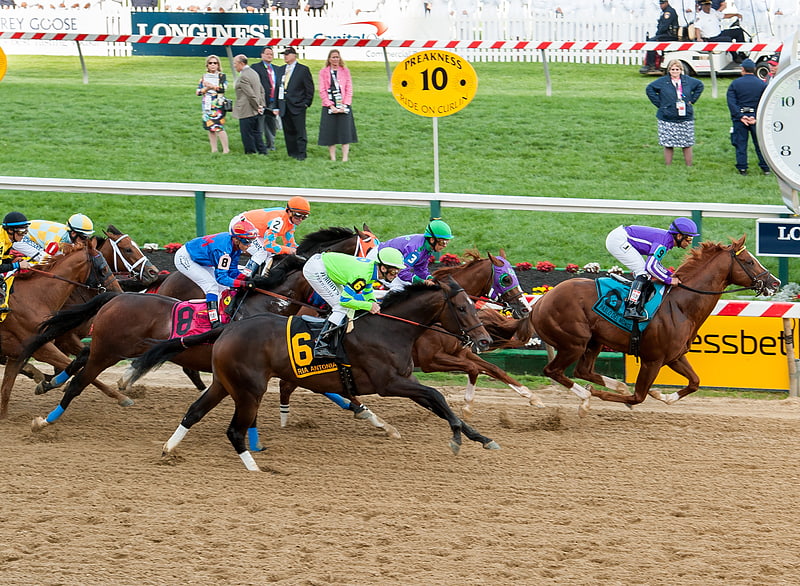
Sports venue in Brampton, England. Huntingdon Racecourse is a thoroughbred horse racing venue located in Brampton near Huntingdon, Cambridgeshire, England. It hosts 17 jump race meetings spanning nine months of each calendar year.
The site is also a Site of Special Scientific Interest called Brampton Racecourse.[1]
Address: Huntingdon Racecourse, Huntingdon
Houghton Mill
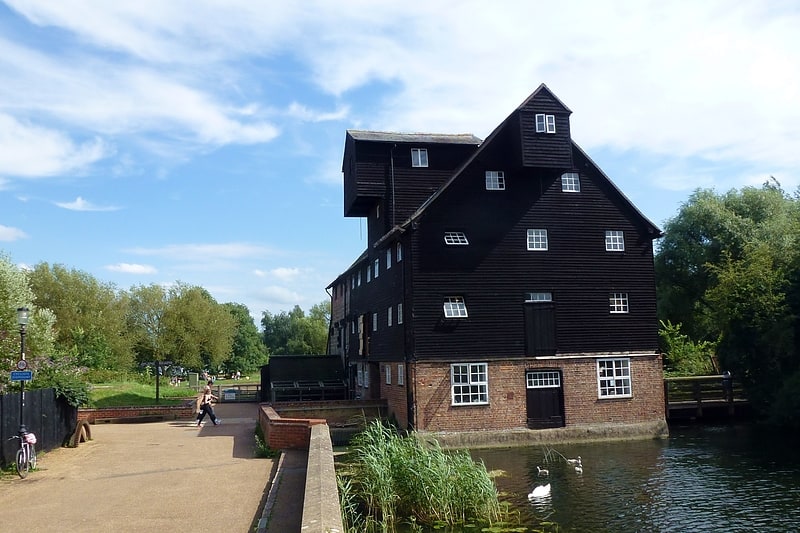
Tourist attraction in England. Houghton Mill is a water mill located on the Great Ouse in the village of Houghton, Cambridgeshire, England. It is a National Trust property and a Grade II* listed building.[2]
Address: Houghton Hill House Houghton Hill, PE28 2AZ Huntingdon
Cromwell Museum
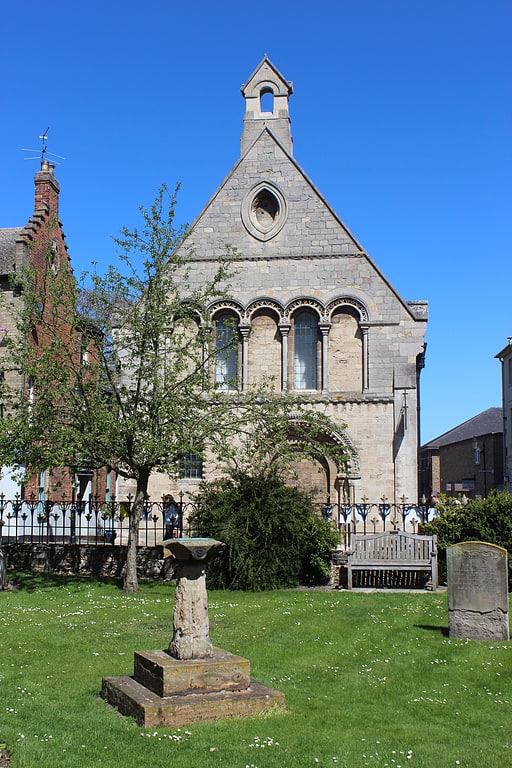
Museum in Huntingdon, England. The Cromwell Museum in Huntingdon, England, is a museum containing collections exploring the life of Oliver Cromwell and to a lesser extent his son Richard Cromwell. Oliver Cromwell was born in Huntingdon in 1599 and lived there for more than half his life. The museum is located in the former grammar school building in which Cromwell received his early education. Founded in 1962, the museum contains significant artefacts, paintings and printed material relating to The Protectorate. The museum is currently run as part of a trust dedicated to Oliver Cromwell's legacy and previously by the Cambridgeshire Libraries, Archives and Information Service, part of Cambridgeshire County Council.[3]
Address: Grammar School Walk, PE29 3LF Huntingdon
Huntingdon Town Hall
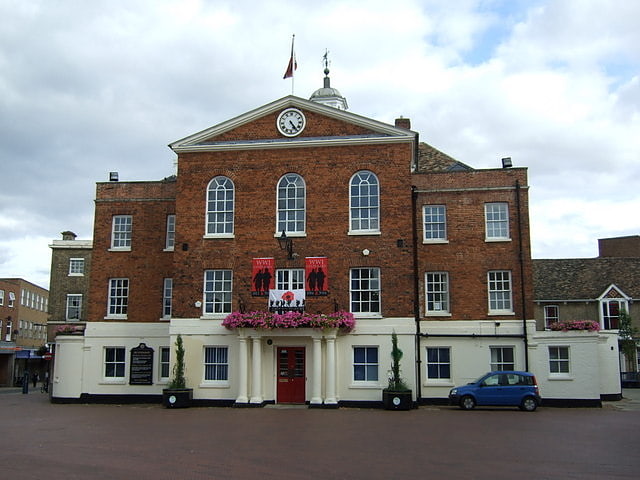
Public works department in Huntingdon, England. Huntingdon Town Hall is a municipal structure on Market Hill in Huntingdon, Cambridgeshire, England. The town hall, which was the headquarters of Huntingdon Borough Council, is a Grade II* listed building.[4]
Old Bridge
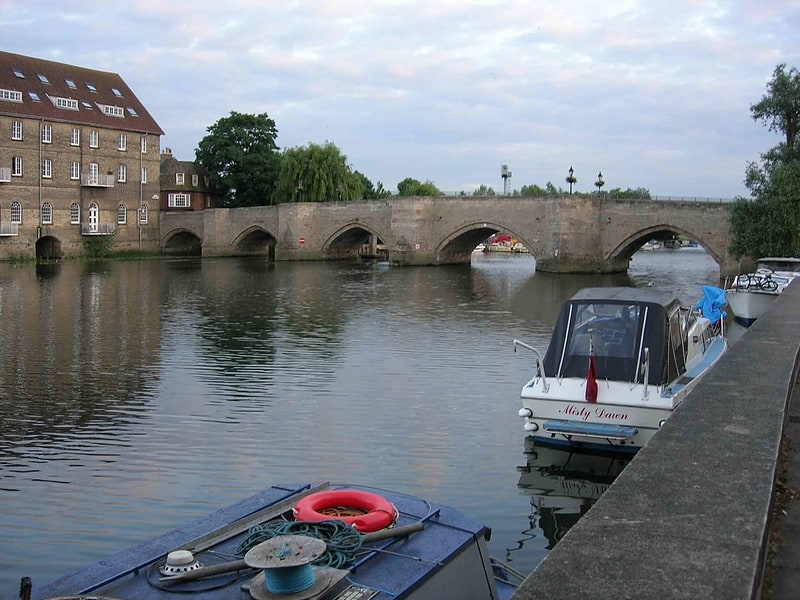
Deck arch bridge. The Old Bridge in Huntingdon is a well-preserved medieval stone bridge over the River Great Ouse, connecting Huntingdon to Godmanchester.[5]
Address: 1 High St., PE29 3TQ Huntingdon
Hinchingbrooke House
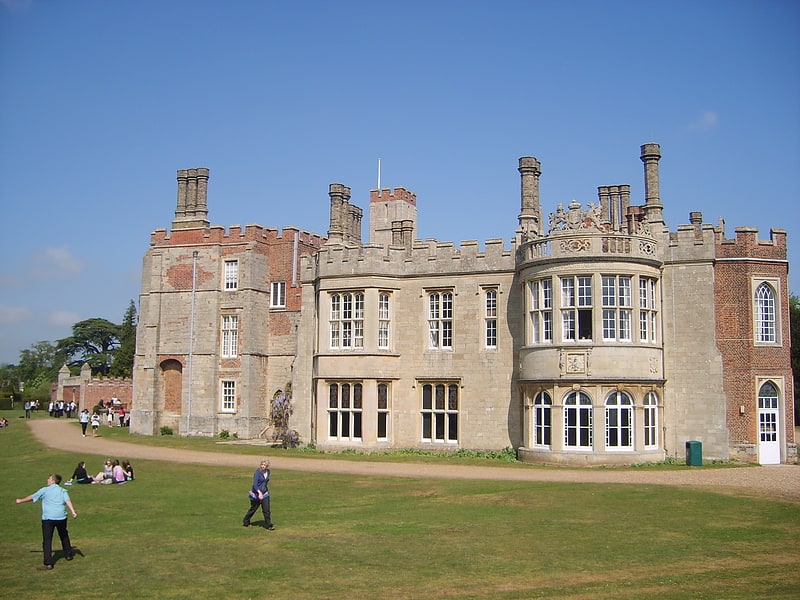
Stately home in Huntingdon, England. Hinchingbrooke House is an English stately home in Huntingdon, Cambridgeshire, now part of Hinchingbrooke School.
The house was built around an 11th-century Benedictine nunnery. After the Reformation it passed into the hands of the Cromwell family, and subsequently became the home of the Earls of Sandwich until 1956, including John Montagu, 4th Earl of Sandwich, reputedly the "inventor" of the modern sandwich.
On 8 March 1538, Richard Williams (alias Cromwell), a nephew of Thomas Cromwell, had the grant of the nunnery of Hinchingbrooke, in Huntingdonshire, for the undervalued price of £19.9s.2d. while he was an official Visitor overseeing the dissolution of the monasteries. A fireplace discovered in the building has his initials. His son, Henry Williams (alias Cromwell), grandfather of Oliver Cromwell, carried out more extensive works on the house.
According to Mark Noble, an eighteenth-century writer and frequent visitor at Hinchingbrooke, "The nuns' apartments, or cells, at Hinchinbrook, are now entire, and are used as lodging-rooms for the menial servants; their common room was what is now the kitchen; the church is destroyed, except some trifling remains, now part of one of the walls of the house, and seem to have been the corner of the tower; near this place in lowering the flooring, a few years ago, one or more coffins of stone were found", and "On the bow windows he put the arms of his family, with those of several others to whom he was allied".
Queen Elizabeth stayed at Hinchingbrooke in August 1564 after entertainments at Cambridge University. King James was at Hinchingbrooke on 7 December 1610, Prince Henry stayed on 8 August 1612.
There was a serious fire in 1830 and the house was restored/rebuilt by Edward Blore. It was further restored in 1894 and again in the 1960s. During the most recent restoration the entrance to the chapter house was discovered, but otherwise little of the medieval fabric is visible.
The house was featured and illustrated in the 2 November 1907 issue of Country Life.
In 1970, it became part of Hinchingbrooke School, housing the 6th form. Hinchingbrooke School was formerly Huntingdon Grammar School which, on the site of what is now the Cromwell Museum in Huntingdon, was attended by Oliver Cromwell and Samuel Pepys. The school now has around 1,900 pupils.
More recently, while still being used as a school, Hinchingbrooke House is turned into a critically acclaimed scare attraction in the Halloween season called 'The Horror at Hinchingbrooke House'. It is also used as a conference centre, for dinner dances, and as a wedding venue. It is a Grade I listed building and is open for tours on Sunday afternoons in the summer season.[6]
All Saints' Church
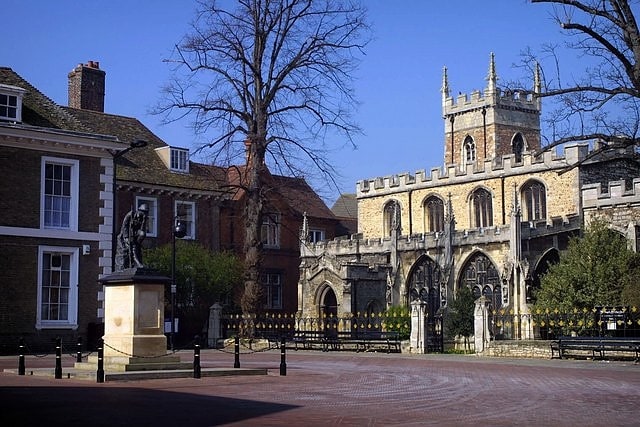
Church in Huntingdon, England. All Saints' Church is a Church of England church located in Huntingdon, Cambridgeshire, England. There have been multiple churches on the site of this one. The earliest mention of a church dates to 973 AD with the original dedication having been to either St Mary, or The Blessed Virgin and All Martyrs.
The chancel is Early English Period, but the main structure is in the Late Perpendicular Gothic style, dating from about the reign of Henry VII, and rebuilt in 1620. It was restored under the direction of Sir George Gilbert Scott when new oak roofs were added, and the old carving, retained wherever possible, or faithfully reproduced. It consists of chancel, nave, aisles, south porch and a western tower of Perpendicular era, containing four bells. There are several stained windows, a pulpit of carved alabaster around which runs an elaborate railing of metal work, in which a combination of copper, brass and tin has been used, the whole resting on a stone base. The font is of carved stone supported on columns of jasper, Irish and foreign marbles. There is a large organ with three rows of keys and containing between thirty and forty stops. The stalls are of carved oak, interspersed with walnut and cedar. A reredos of carved oak, enriched with figures, niches and canopies, was erected in the 1800s. The vestry was enlarged and ornamented with caning. The church has seating for about 500 persons.
The registers of the parish of St John Baptist, brought here at the demolition of the church of that name, date from 1585; those of All Saints are from 1558. The celebrated entry of the baptism of Oliver Cromwell occurs in the register of St John's under the date of 1599, and there is a mention, about twenty years later, of his having done penance for some improper conduct. The name of Cromwell frequently occurs: Robert Cromwell father of the Protector, was buried in the church, 24 June 1617. There is also mention made of the resting within its walls of the body of Mary Queen of Scots on its way from Peterborough Cathedral to Westminster Abbey, to which latter place it was removed by order of her son, James I.[7]
Address: High St, PE29 3PJ Huntingdon
St Mary's Church
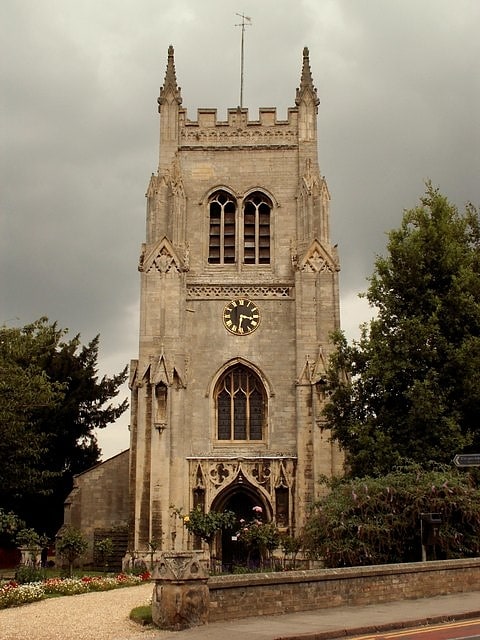
Church in Huntingdon, England. St Mary's Church is located in Huntingdon, Cambridgeshire, England. The church is said to have been the "Mother Church of Huntingdon". It occupies what is probably the original site of Huntingdon Priory of Austin Canons, founded in 1140 by Eustace de Lovetot, and seems to have been used initially as a parochial church upon the removal of the priory to the east end of town during the reign of Henry II.
In July 1607, the building fell down, and construction of the present church commenced in March of the following year and finished in 1620. The church's organ chamber and vestry were built later in 1869, and further restorations were carried out in 1876.
It was listed as a Grade I building in January 1951.[8]
Address: 142 High St, PE29 3TF Huntingdon
Huntingdon Castle
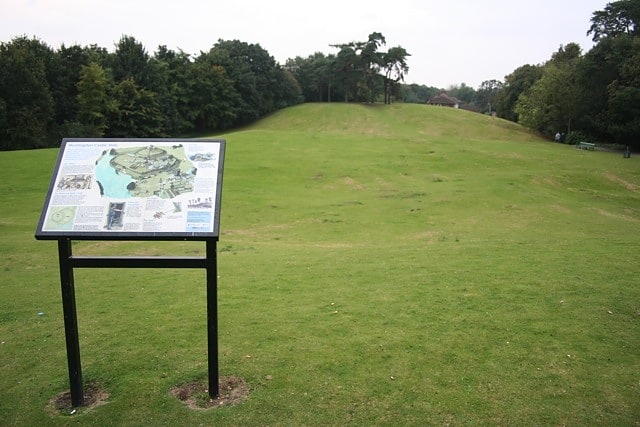
Historical landmark in Huntingdon, England. Huntingdon Castle was situated in the town of Huntingdon in Cambridgeshire.
In 1068 a Norman motte and bailey castle was built for William the Conqueror. During the Anarchy the castle was held by David, King of Scotland through his marriage to Maud, 2nd Countess of Huntingdon. He supported Empress Matilda in a battle of succession and the castle was much damaged at this time. However, when the succession was settled, David's son Henry paid homage to King Stephen who in turn gave him the borough of Huntingdon in addition to the castle.
By 1173 the castle was still held by the kings of Scotland, at that time by William the Lion. He had sided with Henry, the rebel son of Henry II, during the Revolt of 1173–1174, and the castle was besieged by Richard de Luci. The siege was taken over by Simon de St. Lis but it did not end until Henry II (who had just performed penance at the tomb of Thomas Becket) arrived at Huntingdon. The siege ended the following day and Henry then ordered that the castle be dismantled (slighted). The Pipe Rolls recorded that 7s 8d was spent on dismantling the palisade. According to historian Sidney Painter, it was one of at least 21 castles demolished on Henry II's instructions.
Parts of the castle did remain, including the chapel, and its ownership passed through a number of hands. The castle was refortified during the Civil War. For a time it served as the county gaol, and later a windmill stood on the castle mound. Nothing now remains of the castle itself apart from its earthworks, although the site is a scheduled ancient monument.[9]
Coneygear Park - managed by Huntingdon Town Council
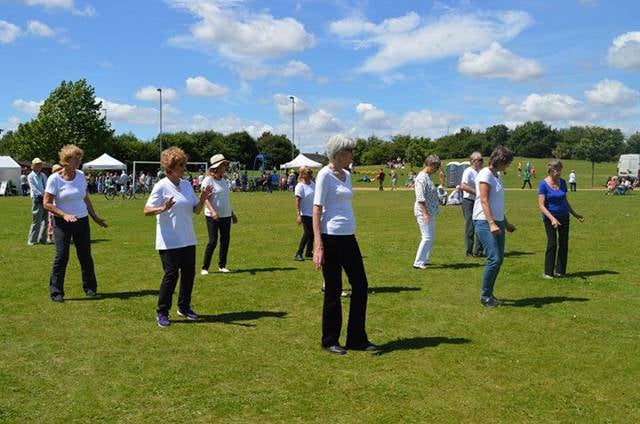
Park, Relax in park
Address: 40-50 Coneygear Rd, Huntingdon
Literary and Scientific Institute
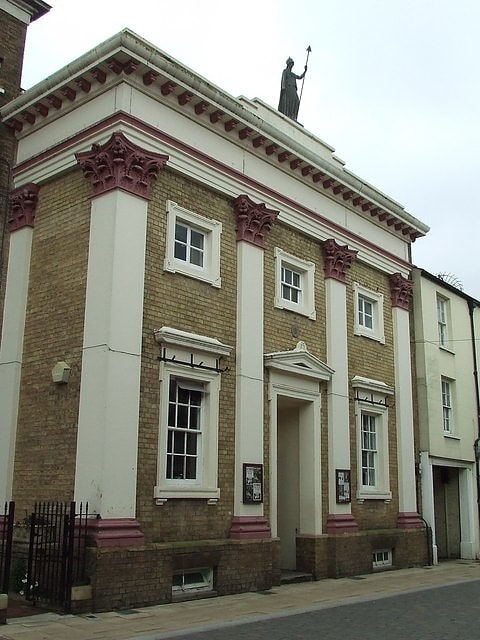
The Literary and Scientific Institute was located in Huntingdon, Cambridgeshire, England. Founded by Robert Fox, it is currently used as Commemoration Hall.[10]